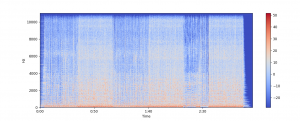This week, we mainly focused on the interim demo. In preparing for the demo, we noticed that our Gantt chart needed to be updated. We have attached the new version here. This creates more specificity on the tasks we are working on and includes some of the delays we have had in reaching our goal.

One setback we had the morning of the demo was the integration between the game code itself and the drum module. Because the first time that this error happened was on the morning of the demonstration, we are still working on debugging it and ensuring that this does not happen again. Furthermore, because the integration between Windows and Mac for the sound library we want to use for the game seems very difficult to transfer between platforms, we are working on picking and implementing a new package for this. Finally, on the creation of the beat map side, the actual beats are able to be created in a way that is somewhat similar to the song. However, more testing needs to occur. This is further explained in the individual post.
A large portion of our work is on aesthetic changes. The game play code (while mostly playable) had to be updated to reflect a more interesting user experience. The specific changes can be found in the individual team diagrams. Furthermore, the drum apparatus will now have lights to also create a more interesting user experience, so this is also being worked on.
Schedule wise, we are on track to follow the new gantt chart. We do not foresee any reason why we won’t be able to follow this schedule, so we should be able to have a playable game at the end of the semester!


